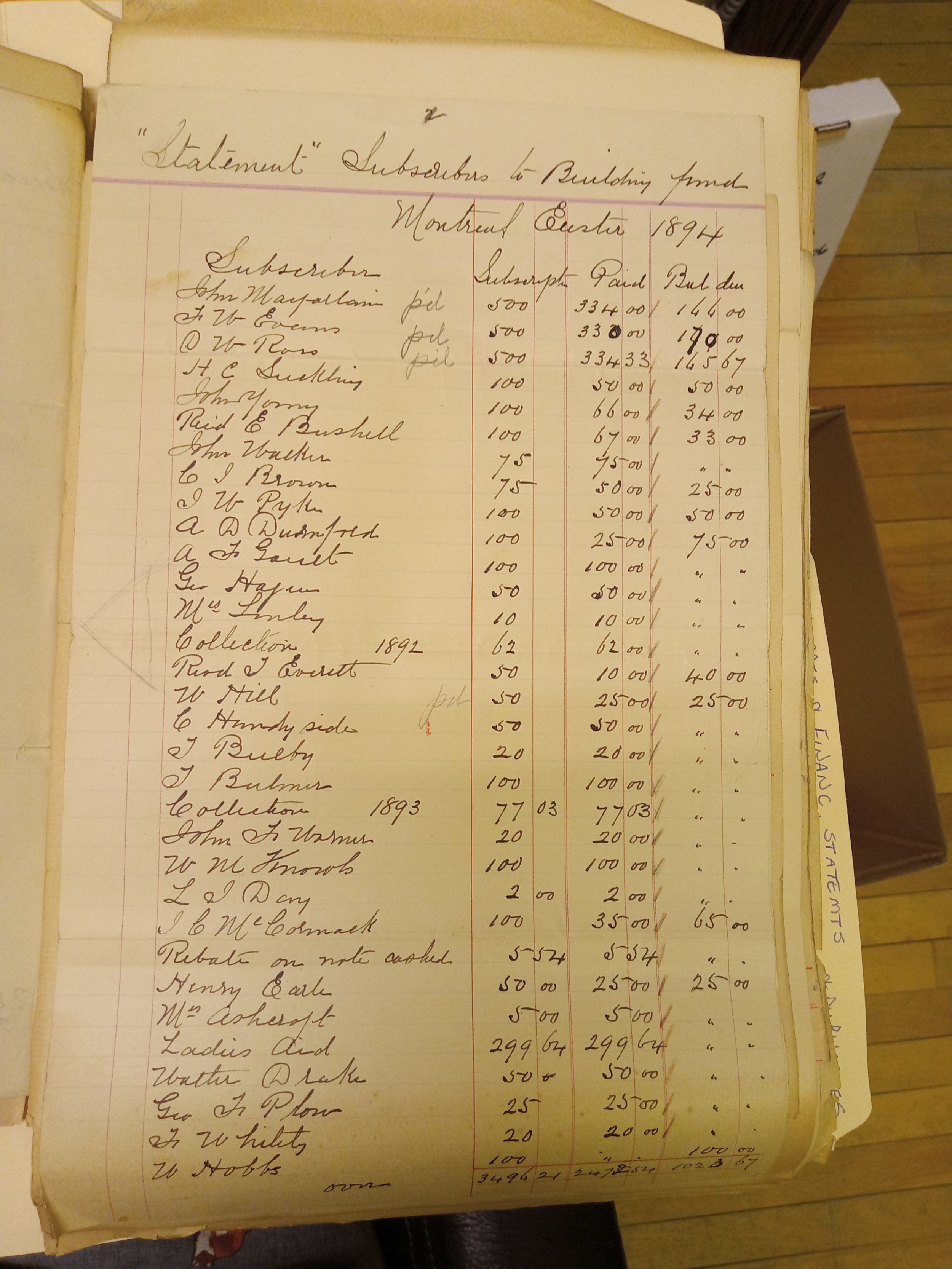April 2nd: Financing a New Church
St. Matthias’ was officially founded as a mission of St. George’s, Place du Canada, in 1873, which means our community is 150 this year! For the next 12 months, we’ll be diving into the archives to shine the spotlight on particularly interesting parts of our history.
A photo of the laying of the foundation stone of the new building, with clergy and choir in attendance, in 1910.
It took a lot of people a lot of dreaming to get to this moment in 1910. The original church, built in 1875, was no longer big enough to fit the approximately 80 families who were members of the church by 1892, nor did it have electric lights or a suitable organ. A committee struck at Easter Vestry 1892 reported a few months later that a building to seat 600 could cost about $15,000 (nearly $400,000 in today’s dollars). The Synod of Montreal was holding approximately $4500 (~$120,000) in trust that was usable for capital purposes, and in the three short months of its existence the committee had already secured subscriptions of $2300 (~$60,000). There was no reason, they said, that the new church could not be ready for the summer of 1893. And yet we know that it would be twenty more years before the first service in the new building, on the 28th of April 1912. To understand how that happened, we have to follow the money!
By November of 1892, the price had already risen dramatically. The architect who was working the committee free of charge thought that the basement could be ready for occupation, and the walls, roof, and double windows finished for the upper portion of the building, for about $16,000 (~$415,000). To make the upstairs ready to receive occupants would take another $6000 (~$160,000). Subscriptions amounted to only $5000 (~$130,000), still a princely sum in the 1890s but nowhere near enough. Vestry 1892 had permitted the committee to seek and accept tenders that came to no more than $17,000 (~$440,000), and so when the lowest tenders in each area (masonry, carpentry, etc.) amounted to more than $23,000 (~$600,000), the committee felt that it was time to re-evaluate.
At Easter Vestry 1893, they proposed to defer the new building project until the church’s financial position was stronger (nearly 40% of attendees were not in the habit of giving at the time), and to use the nearly $3000 (~$78,000) that had already come in from subscriptions to fund an enlargement to the current building that would include needed repairs, electric lights, and an organ that could then be moved to the new building. The work was completed in 1899, thanks in part to a loan from the Merchants Bank of Halifax that covered the portion of costs that was nearly double the estimated $3200 (~$83,000), and the urgency for a new building abated.
But in the meantime, the dream was not dead. Quite the opposite, in fact; by Easter 1894, subscriptions amounted to over $3500 (~$91,000) and by 1899 nearly $2000 (~$52,000) was coming in from subscriptions each year. The church next took out a loan from the Royal Bank of Canada in 1900 to help finance the acquisition of more land from Mrs. Raynes, the original donor, in accordance with the advice from the architect in 1892 that the plot was too cramped for a second building. Finally, in 1911, the church petitioned for and was granted the right to take out a significantly more substantial loan than any it had previously undertaken: up to $50,000 (~$1.3 million). Subscription campaigns had continued all the while, and finally, on April 28th, 1912, the congregation celebrated their first service in the new building.
It wasn’t yet the beautifully decorated structure we know and love today – these photos from earlier in 1912 show us that much – but it was, finally, home.
[a note from your crack research team: the Bank of Canada’s Inflation Calculator is based on the Consumer Price Index, which only goes back to 1914. As all of the figures here predate 1914 considerably, it’s difficult to say how accurate our translations to contemporary values are.]

















